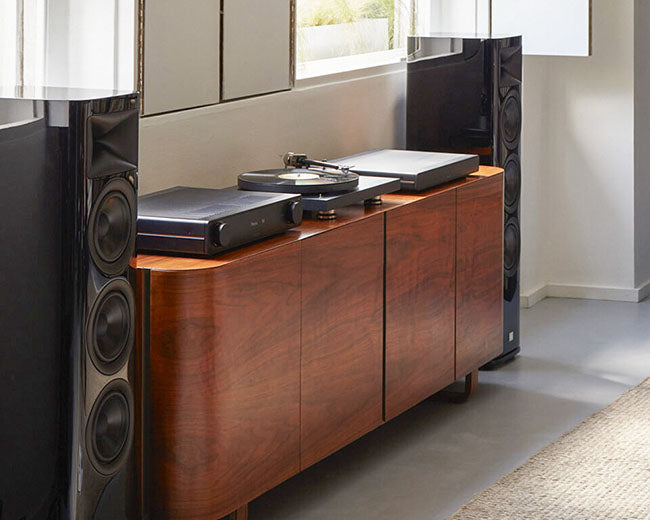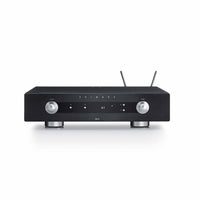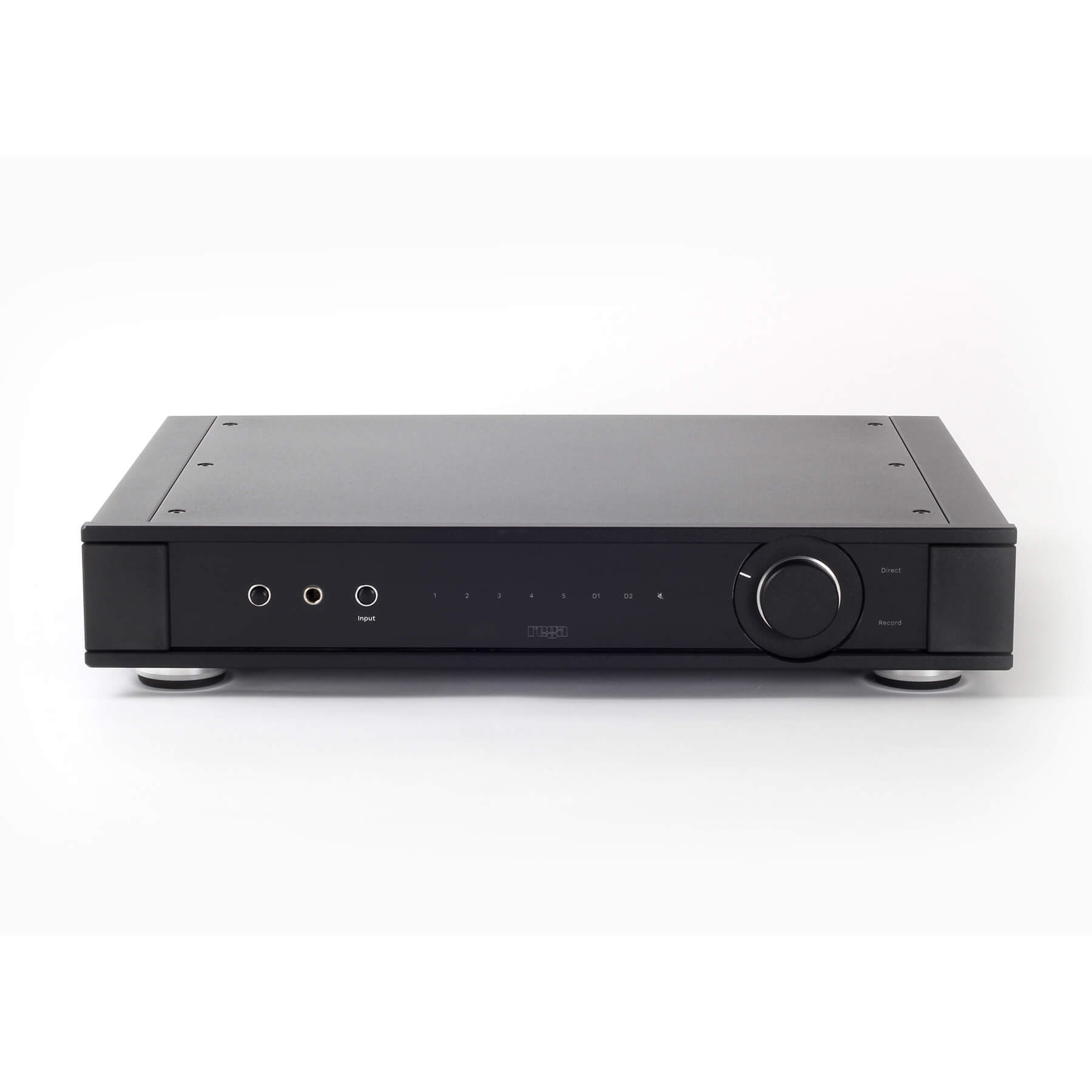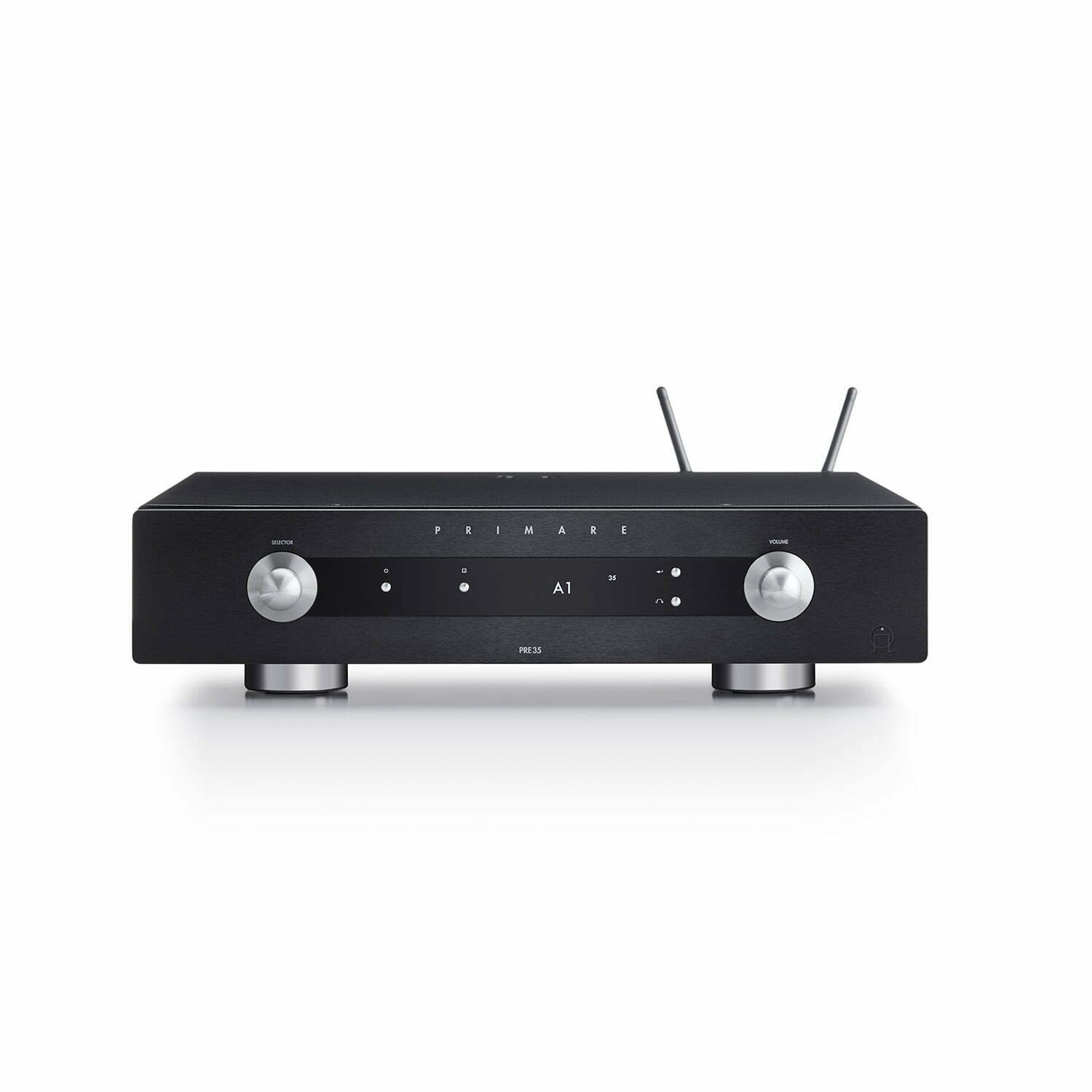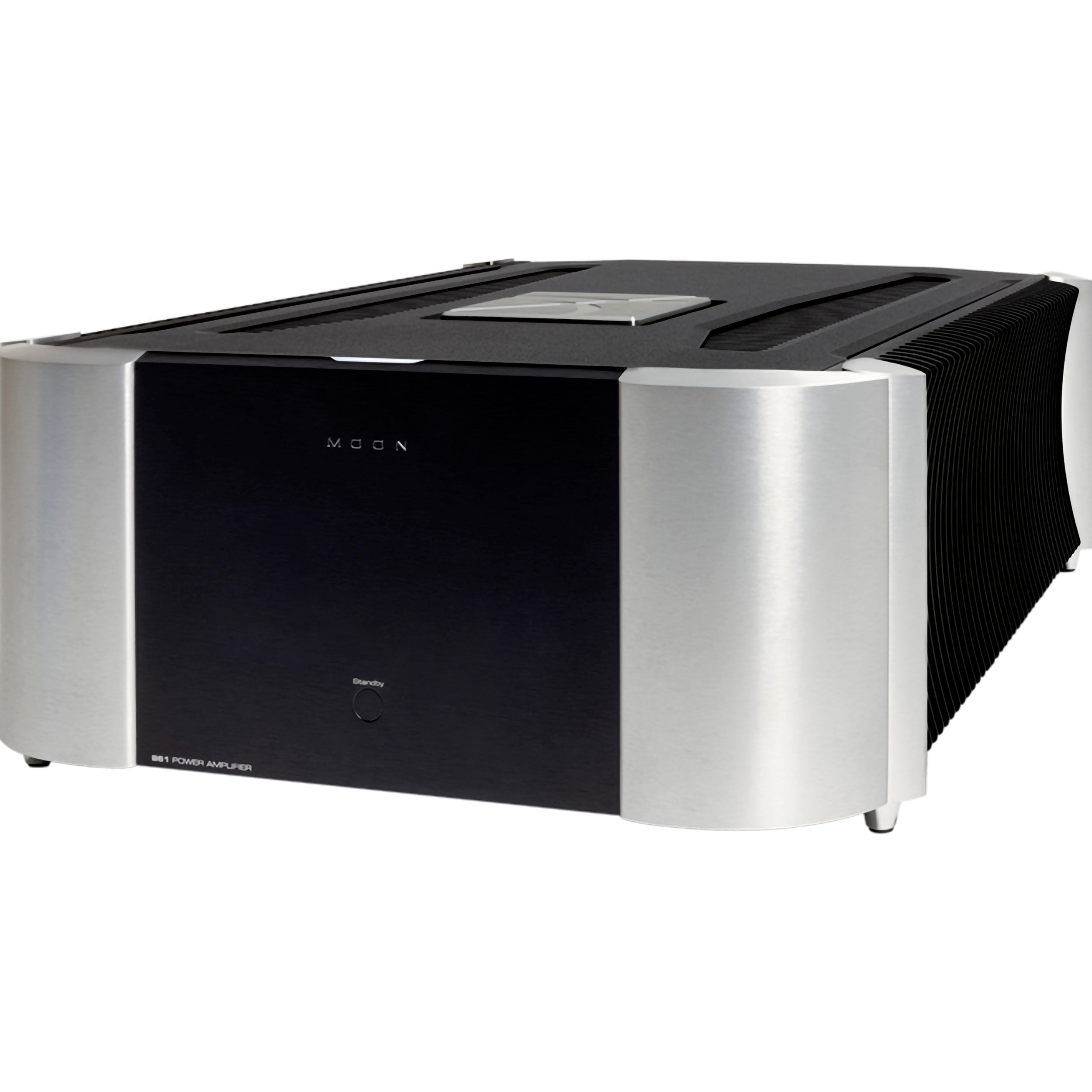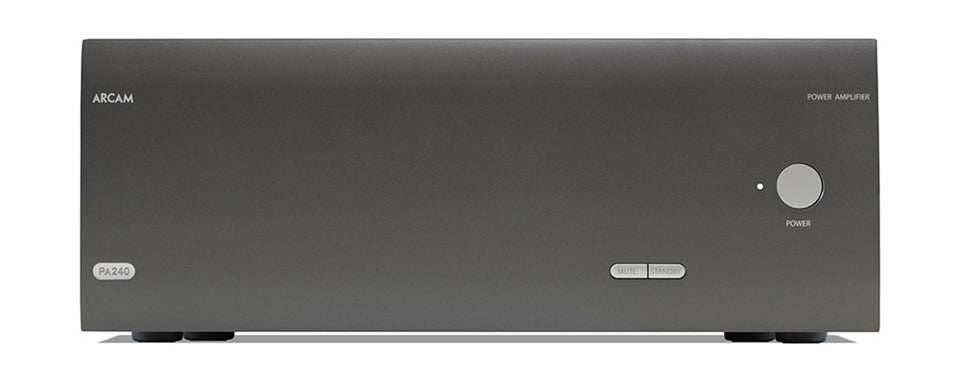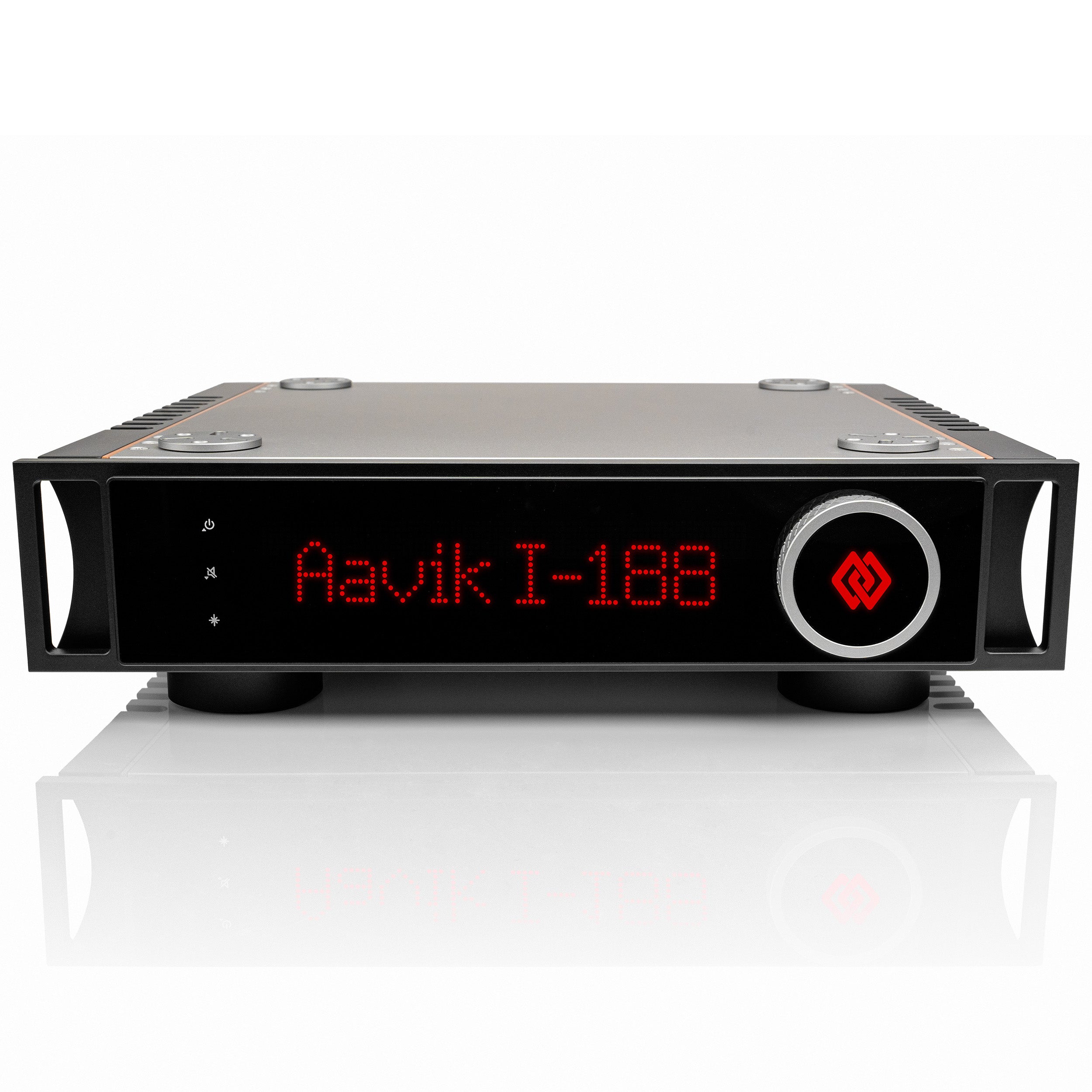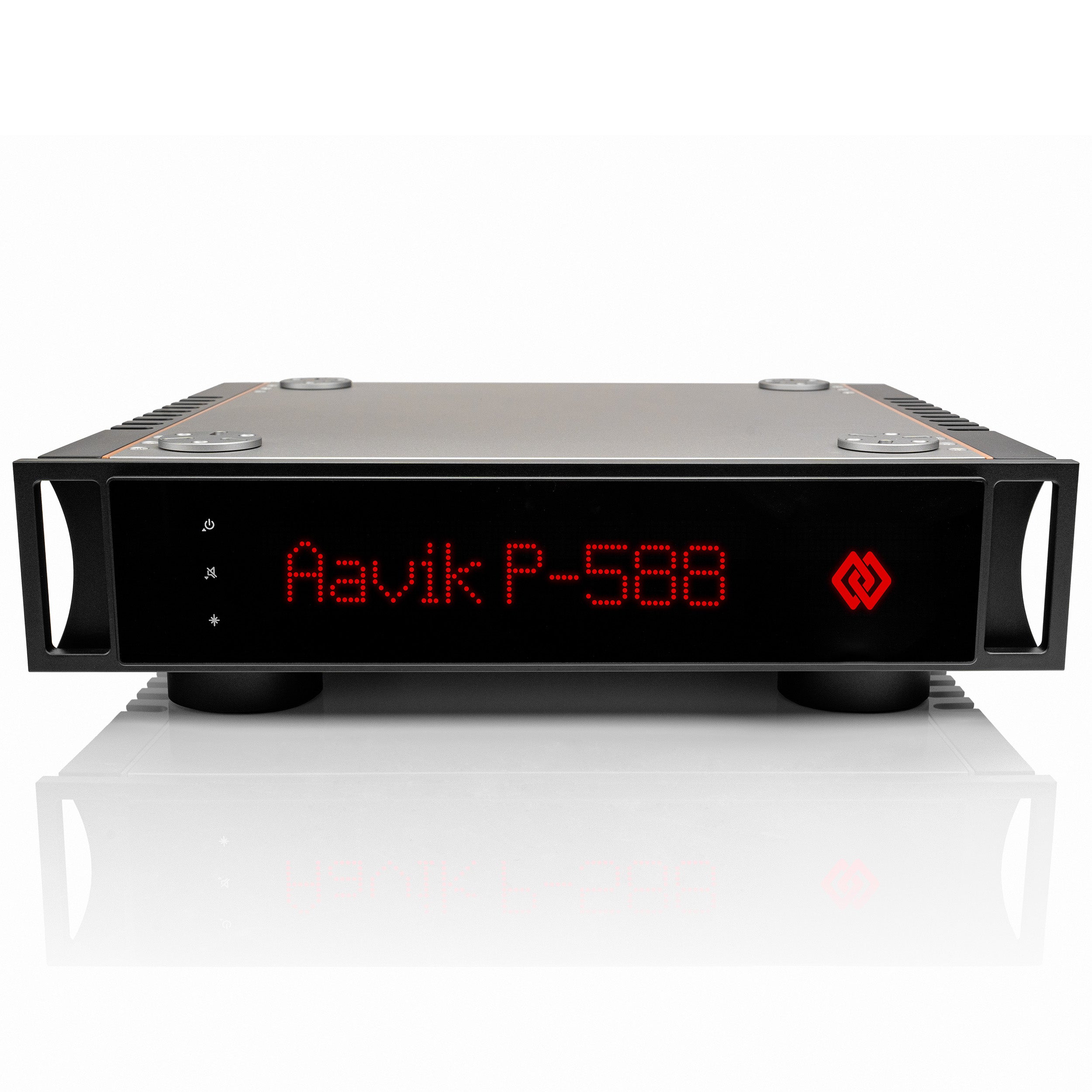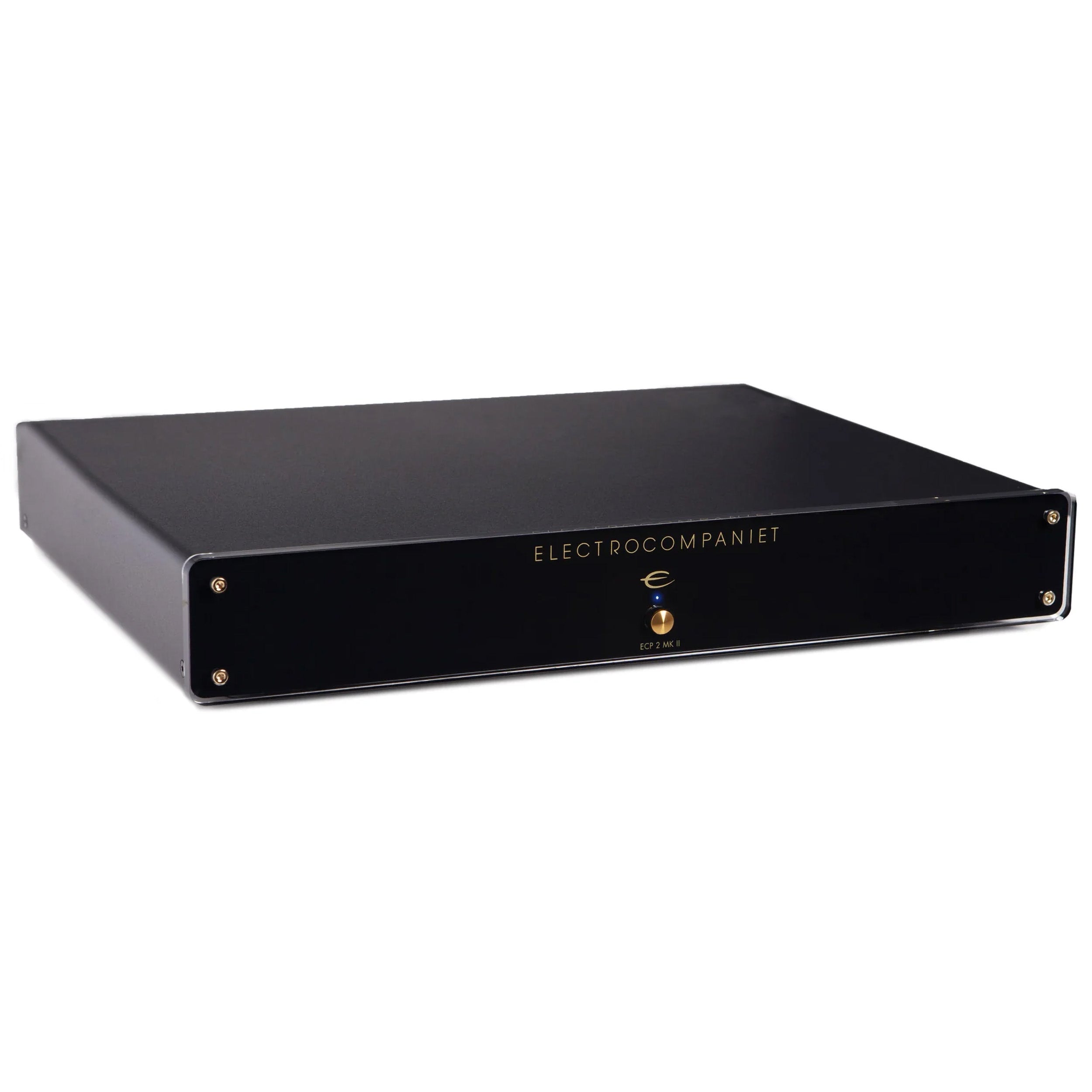Filtre
Hvad er en forstærker?
Forstærkeren er en nødvendig bestanddel i enhver form for lydgengivelse, overalt hvor der gengives lyd vil der naturligt indgå en forstærker kredsløbet. Forstærkerens opgave er som navnet antyder, sat i verden for at forstærke et givent signal fra en given kilde, det være sig signalet fra en CD-afspiller, streamer, pladespiller eller lignende. Signalerne fra disse kilder er i sig selv ret svage og har derfor brug for at blive forstærket for derigennem at blive omsat til hørbar lyd.
En forstærker består groft sagt af to væsentlige bestanddele, en forforstærkerdel og en effektdel. Forforstærkerdelens opgave er at omsætte signalerne fra kilden til et sprog effektforstærkerdelen kan forstå så den derefter er i stand til at forstærke signalet videre til dine højttalere.
Effektforstærkerens opgave er at forstærke signalet fra forforstærkeren og sende dette forstærkede signal videre til dine højttalere. Jo kraftigere effektforstærker, jo kraftigere og højere kan du spille. Man kan med andre ord sige at forforstærkerdelen er hjernen i forstærkeren, og effektdelen tilsvarende er musklerne.
Der findes flere forskellige varianter af forstærkere, og de udfører i princippet alle den samme opgave. Nemlig at omsætte signaler og samtidig forstærke disse til hørbar lyd.
Integreret forstærker
Den integrerede forstærker er den mest brugte og kendte type forstærker vi kender, og den indeholder både forforstærker og effektforstærkerdel i et og samme apparat. Til den integrerede forstærker tilsluttes alle de forskellige kilder du måtte have i dit system, men også højttaler kablerne tilsluttes her for at kunne sende lyden videre til dine højttalere.
Enhver integreret forstærker er udstyret med en såkaldt volumenkontrol, der er herigennem du justerer lydstyrken til det ønskede nivau. Der findes forskellige varianter af den integrerede forstærker, nogle er kraftigere og større end andre, og nogle er udstyret med både DAC og ”streamingsmoduler”. Dette betyder, at du i princippet kan nøjes med kun et apparat for at afspille musik i samarbejde med dine højttalere.
Forforstærker & effektforstærker
Her opdeler man rent teknisk den integrerede forstærker i to apparater. Forforstærkeren samler signalerne fra kilderne og fungerer samtidigt som kontrolcenter, her foretages justeringer i opsætninger og justering at lydstyrken osv. Der er her at alle dine kilder tilsluttes, såsom cd afspiller,netværksafspiller, pladespiller, tv og lignende.
Effektforstærkerens opgave er at yde de kræfter, der kræves for at omsætte forforstærkerens signal fra kilderne til den hørbare lyd der ender i højttalerne. En effektforstærkers ydelse måles i Watt. Lidt forenklet sagt, så er dette et udtryk for hvor højt og kraftigt du kan spille. Jo flere watt jo højere lyd. Dette er som sagt en lidt forenklet forklaring, da mængden af strøm bag de opgivne watt også er bestemmende for effektforstærkerens kræfter.
Her drejer det sig mere om at vælge netop den rigtige forstærker i samspil med de rigtige højttalere. Det er nemlig dine højttalere der bestemmer hvor kraftig effektforstærker du har brug for. Nogle højttalere kræver mere strøm/effekt end andre, og derfor er det her vigtigt at man kigger nærmere på højttalernes specifikationer inden man vælger sin effektforstærker.
Hvornår skal du vælge separat forforstærker og effektforstærker?
Rent teknisk og lydmæssigt kan der være flere fordele i at dele den integrerede forstærker i to apparater. Man får derved to separate strømforsyninger som tit giver bedre lyd fordi de følsomme komponenter i forforstærkeren ikke i samme grad bliver forstyrret at den ofte støjende strømforsyning fra effektdelen. Derudover kan der være en lydmæssig fordel i et få andre følsomme komponenter i forforstærkeren adskilt fra effektdelen. Et opdelt forstærkersæt giver tillige også en større fleksibilitet, da det her er muligt at udskifte enten for eller effektforstærkeren separat til en anden type eller mærke.
Selvom det separate for/effektforstærkersæt tit betegnes som mere ambitiøst og bedre lydende end den integreret forstærker, så er dette ikke altid tilfældet. Her er det naturligvis også et spørgsmål om producentens kompetencer og selvfølgelig også kvaliteten af forstærkerne. Generelt er det dog at det separate forstærkersæt er i besiddelse af tekniske fordele, der hvis det er gjort rigtigt giver bedre lyd end den integrerede løsning.
5 Tips før du vælger forstærker
1). Hvilke behov har du for musikgengivelse. Lytter du ofte til musik og sætter stor pris på at lydkvaliteten er i top, og har du samtidigt lyst og mulighed for at lytte til din musik ved realistiske lydtryk, eller har du blot brug for baggrundsmusik eller at lytte til radioen i hverdagen.
2). Hvordan ønsker du at lytte din musik. Ønsker du kun at afspille din cd samling en gang imellem, eller er du til vinylplader. Er du interesseret i at afspille din musik igennem de forskellige streamingstjenester og ønsker derfor en kompakt løsning til dette.
3). Hvilke højttalere ønsker du at benytte og af hvilken kvalitet er disse. Skal det være små kompakthøjttalere eller større gulvhøjttalere. Dette er en meget vigtig faktor når der skal vælges en passende forstærker.
4). Hvilken lyd ønsker du? Er du til stor realistisk rock-koncertlyd i topklasse hvor der kræves saft og kraft, eller er du mere til klassisk eller akustisk musik.
5). Vælg en forstærker der rent prismæssigt har sin berettigelse i sammenhæng med resten af dit system.
Lyt gerne til forstærkeren sammen med de valgte højttalere inden du beslutter dig, og benyt dig af fagfolk hvis du er i tvivl. Du kan nemlig ikke læse dig til hvordan en given forstærker spiller sammen med de valgte højttalere.
De forskellige forstærkertyper
Der findes mange forskellige forstærkertyper som benytter sig af forskellige teknologier for derved at opnå en bestemt lydsignatur.
Klasse A og A/B forstærkere
Den traditionelle klasse A/B forstærker eller klasse A forstærker som vi typisk kender ved at benytte sig at den velkendte transformator og stor ladelytte kapacitet er stadigvæk den mest udbredte teknologi. Denne type forstærker er gennemprøvet og forfinet igennem årtier, og mange entusiaster sværger stadigvæk til denne løsning. Disse typer bliver dog tit varme, og lider derfor et hvis effekttab i forhold til en klasse D variant. Dette er de selvfølgelig konstrueret til. Disse typer er typisk lidt varmere i deres spillestil end klasse D forstærkerne.
Klasse D forstærker
Den nyere klasse D teknologi som er opbygget uden den velkendte transformator har efterhånden vundet større og større anerkendelse, og er i disse år på hastigt fremtog verden over. Disse har visse tekniske fordele i forhold til den typiske klasse A/B forstærker. Kort sagt er der færre komponenter i forstærkeren som ikke benytter sig en transformator, men i stedet for selv regner ud hvornår den skal bruge strøm. Dette giver generelt mindre støj og mindre tab af effekt. En klasse D forstærker kendetegner sig ofte ved af være hurtig, og samtidig opløst og neutral i sin gengivelse, samtidigt afgiver en klasse D forstærker stort set ingen varme.
Rørforstærkere
Rørforstærkere er en mindre udbredt forstærker type som benytter sig af rør, for derigennem at skabe effekt og samtidig en typisk varm og flydende lydsignatur. Denne type forstærker benyttes ofte af audiofile som ønsker netop denne varme og flydende lyd.
En rørforstærker bruges tit sammen med et sæt let drevne højttalere. Ved denne type forstærker er det muligt at ændre lyden efter behov i form af udskiftning af de forskellige rør i konstruktionen, dette kræver dog generelt både viden og erfaring, og ting som bias justering og rørskifte er ikke en opgave for Hr og Fru Danmark.
Udover de her nævnte typer findes der også de såkaldte hybrid forstærkere, disse benytter sig typisk af en blanding af de overnævnte teknologier for at opnå en særlig lydsignatur. Hvilken forstærker du har brug for, bør du kunne finde frem til ved at læse ovenstående og selvfølgelig med råd og vejledning fra vores kompetente fagfolk fra Lydspecialisten.
Vi står altid klar til at hjælpe dig med at finde den rette forstærker til dig og dine behov.






































